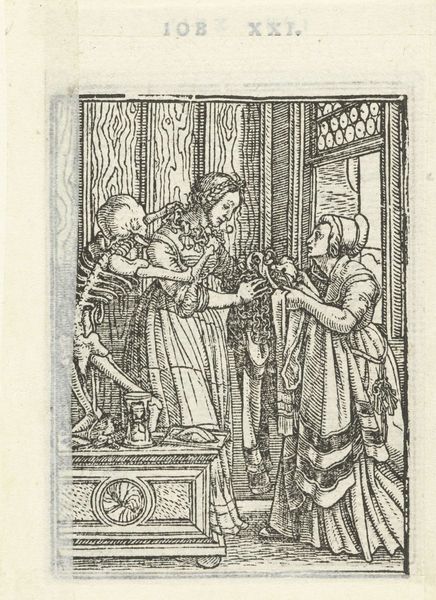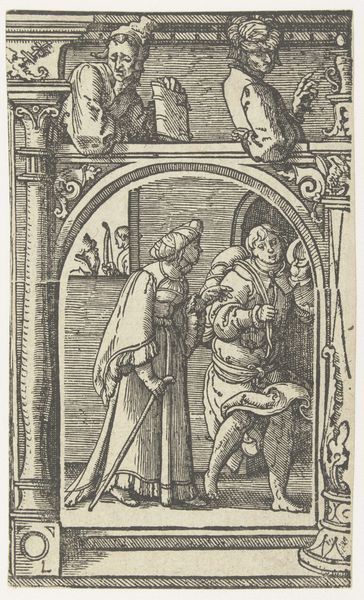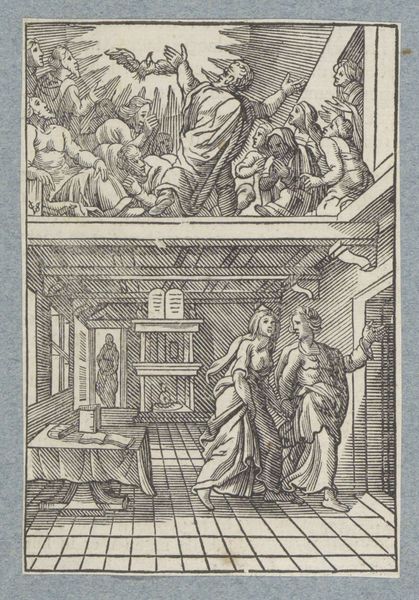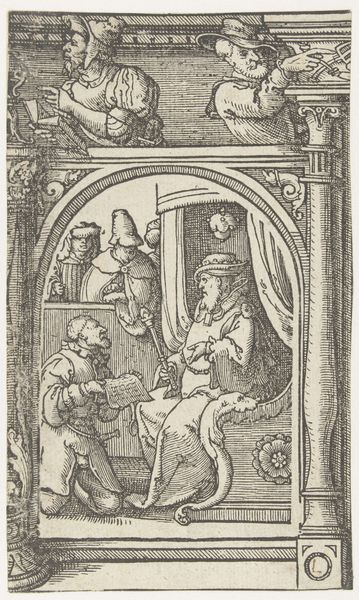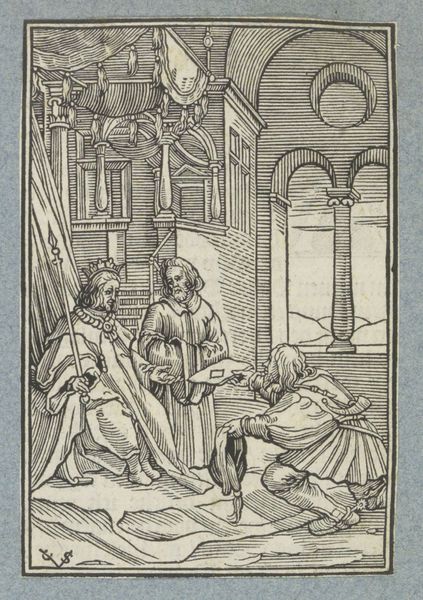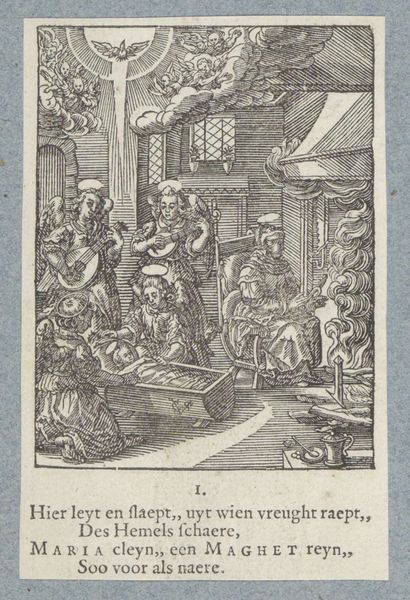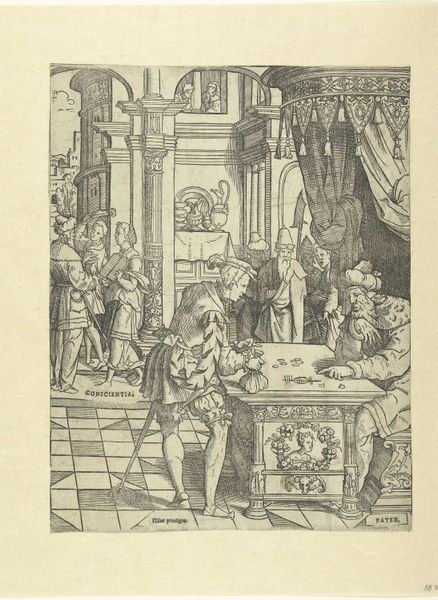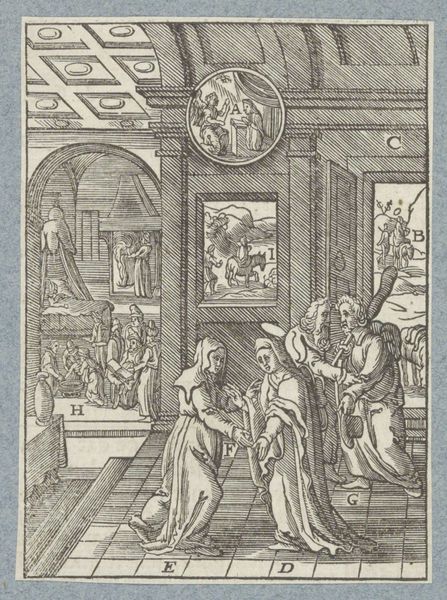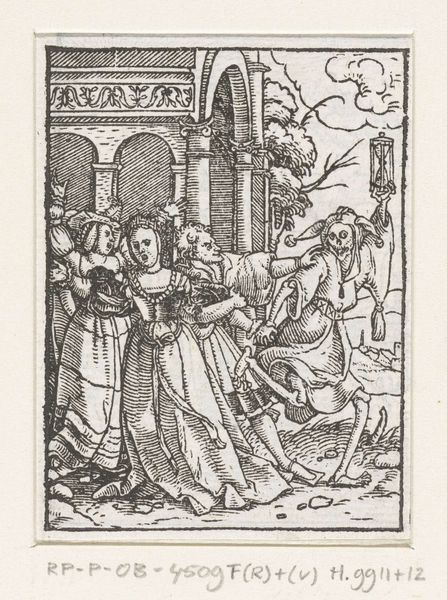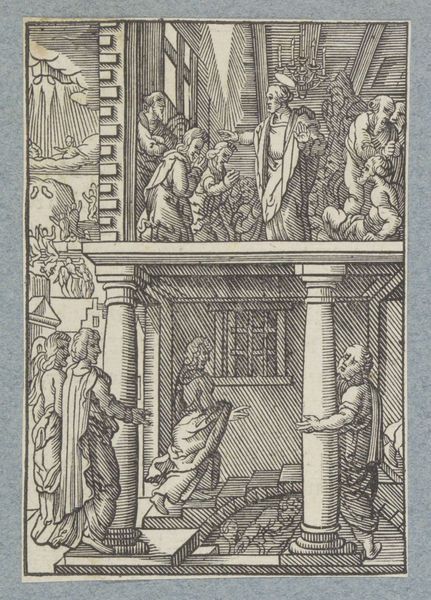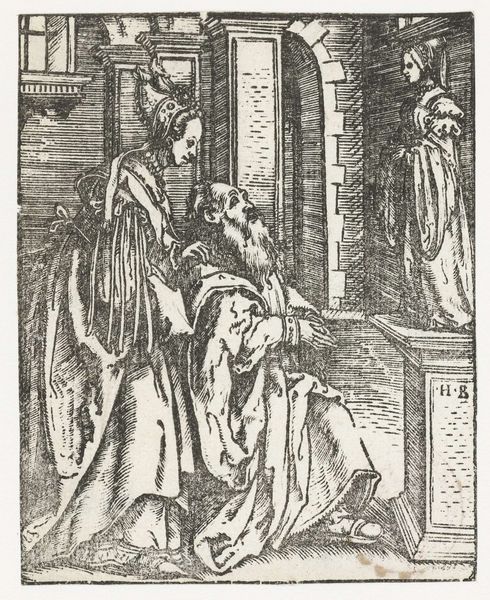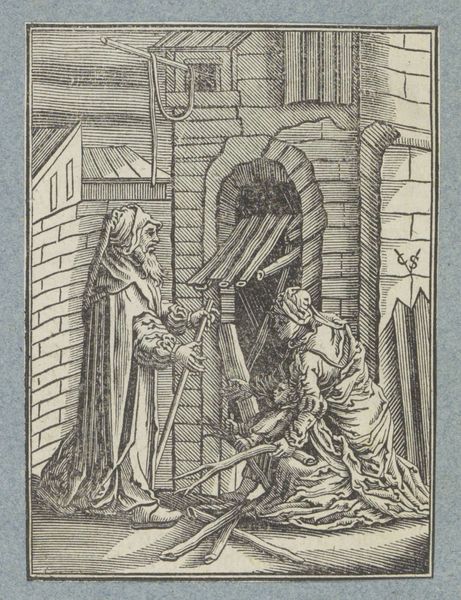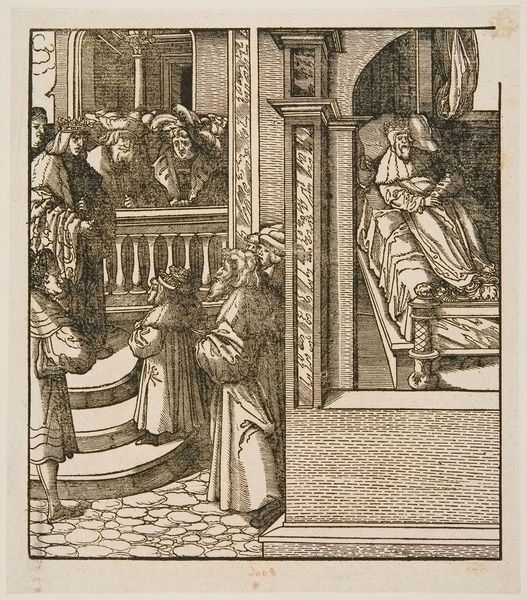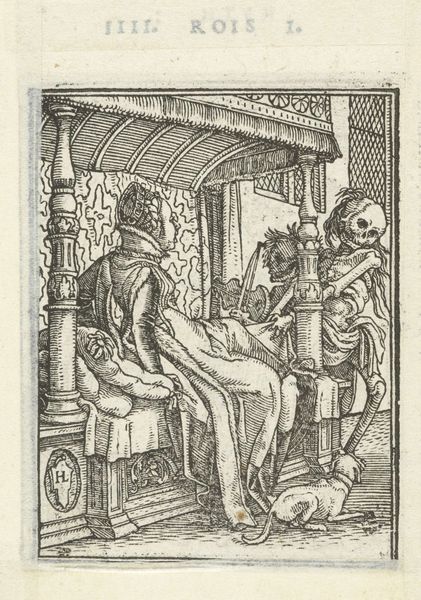
Dimensions: height 65 mm, width 50 mm
Copyright: Rijks Museum: Open Domain
Hans Holbein the Younger made this woodcut entitled 'None en de Dood' sometime in the 16th century. It presents a scene of death interrupting everyday life, a concept quite common in art of the time. The woodcut’s visual codes reveal a complex commentary on the social structures of Holbein’s era. The figure of Death is presented as an active participant in human affairs, confronting figures from all walks of life. Here, a noble sits, playing the lute. Beside him, a nun kneels in prayer before a Madonna and child. Death lays a hand on both, reminding us of the universality of mortality, a theme resonant in the Reformation era that saw widespread questioning of religious authority and social hierarchies. Holbein was working in Basel, Switzerland, a city in which the institutions of the Catholic church were being challenged by reformist ideas. Understanding Holbein’s work requires historical research. Scholars consult period documents, religious texts, and the artist’s biography to reveal the artwork’s intricate layers of meaning. The interpretation of art is always contingent on its social and institutional context.
Comments
No comments
Be the first to comment and join the conversation on the ultimate creative platform.
